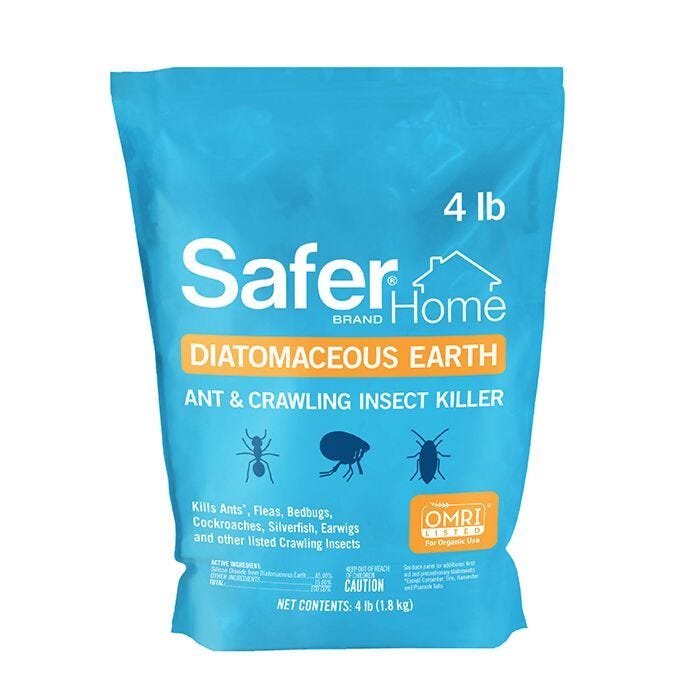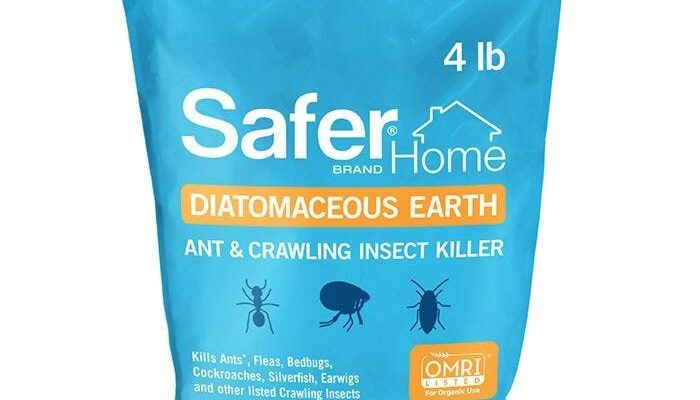
You might be wondering what diatomaceous earth is. Think of it as nature’s tiny, sharp snowflakes. It’s made from fossilized algae called diatoms, which have a unique structure that can help control pests like inchworms. When sprinkled in your garden, it works by damaging the exoskeletons of crawling insects, causing them to dehydrate. This method not only helps protect your plants but also keeps your garden safe for beneficial insects and wildlife. So, let’s dive into how you can effectively use diatomaceous earth against inchworms.
What is Diatomaceous Earth?
Diatomaceous earth (DE) is composed of tiny, fossilized aquatic organisms. Just imagine swimming in a lake and seeing microscopic creatures floating around. Over time, these diatoms died, and their skeletons turned into a fine powder we now use for various purposes.
DE comes in two main types: food grade and industrial grade. Food-grade diatomaceous earth is safe for pets and humans, while industrial grade is used in things like construction. For pest control, you’ll want food-grade DE, as it’s non-toxic and eco-friendly.
What makes diatomaceous earth particularly effective against inchworms is its abrasive properties. When inchworms crawl over DE, its sharp particles pierce their soft bodies, leading to dehydration and death. It’s a simple yet powerful way to protect your plants without using chemical pesticides.
How to Apply Diatomaceous Earth
Using diatomaceous earth against inchworms is straightforward. Here’s a step-by-step guide to ensure you get it right:
1. Choose the Right Time: Applying DE in the morning or late afternoon is ideal. Avoid doing it during wind or rain, as these conditions can blow away or wash away the powder.
2. Prepare the Area: Before applying DE, clear any debris or dead leaves around your plants. This helps the DE stay in place and work effectively.
3. Spread the Powder: Using a dust spreader or your hands (wear gloves) carefully sprinkle a light layer of diatomaceous earth around the base of your plants and on the leaves. Make sure it’s a fine, even coating. You don’t want it clumping together.
4. Reapply as Necessary: If it rains or if you notice signs of inchworms again, you’ll need to reapply. Keep an eye out, and don’t hesitate to refresh the DE after heavy watering or storms.
By following these steps, you’ll create a barrier that inchworms simply can’t cross.
When to Expect Results
After applying diatomaceous earth, you might wonder how long it takes to see results. Here’s the thing: it can take anywhere from a few hours to a couple of days. DE doesn’t kill instantly like chemical pesticides, as it works through dehydration.
You might start noticing fewer inchworms crawling around within a few days. However, keep monitoring your plants regularly. If you still see signs of inchworms, it could mean that the DE was washed away, or there might be new infestations. In such cases, it’s essential to reapply and ensure you’re covering all affected areas.
Benefits of Using Diatomaceous Earth
Why choose diatomaceous earth over traditional pesticides? There are several reasons that make DE a popular choice among gardeners:
– Non-Toxic: Unlike chemical pesticides, diatomaceous earth is safe for humans, pets, and beneficial insects. That means you can manage pests without worrying about harmful side effects.
– Eco-Friendly: DE is a natural product that won’t harm the environment. It breaks down eventually, returning nutrients to the soil.
– Long-Lasting: Once applied, DE can continue to work for a while, especially if it remains dry. Just remember that it needs to be reapplied after heavy rain.
– Broad-Spectrum Pest Control: Besides inchworms, DE can control a variety of crawling insects, such as ants, cockroaches, and even fleas. You’re getting more bang for your buck!
These benefits make diatomaceous earth an appealing choice for anyone wanting to keep their garden healthy and thriving.
Comparing Diatomaceous Earth to Other Pest Control Methods
You might be considering other options for controlling inchworms. So, how does diatomaceous earth stack up against traditional insecticides and other natural methods?
– Traditional Insecticides: While these can be fast-acting, they often come with toxic chemicals that can harm you, your pets, and beneficial insects. DE, on the other hand, is safe and doesn’t carry those risks.
– Natural Sprays: Some gardeners use soap or neem oil sprays to deter pests. While they can be effective, they may not provide the long-lasting protection that DE offers.
– Physical Barriers: Some people resort to using nets or row covers. While these can keep insects at bay, they can also block sunlight and airflow necessary for your plants’ health.
Overall, diatomaceous earth is a fantastic middle ground, providing effective protection without the drawbacks of harsher methods.
Potential Drawbacks of Diatomaceous Earth
While diatomaceous earth is a solid choice for pest control, it’s not perfect. It’s important to be aware of a few potential drawbacks:
– Dust and Mess: Applying DE can create a dusty mess. It might not be ideal for those who prefer a cleaner approach to gardening.
– Effectiveness with Moisture: DE works best when it stays dry. If your garden frequently gets wet, you’ll need to reapply often.
– Inability to Target Specific Pests: Since DE affects any crawling insect, it can also harm beneficial bugs like ladybugs. You’ll want to be mindful of where you apply it.
Understanding these drawbacks can help you make an informed decision about whether diatomaceous earth is the right choice for your garden.
Diatomaceous earth is a fantastic tool for anyone looking to protect their plants from inchworms and other crawling pests. It’s safe, effective, and environmentally friendly—a winning combination for gardeners everywhere. By following the steps to apply it correctly and being mindful of its benefits and drawbacks, you can keep your garden thriving and healthy.
So, next time you spot an inchworm inching its way towards your precious plants, remember the little white powder that can save the day. Who knew natural pest control could be so straightforward? With diatomaceous earth in your gardening toolkit, you’re well on your way to a flourishing garden that’s free from pesky inchworms.

